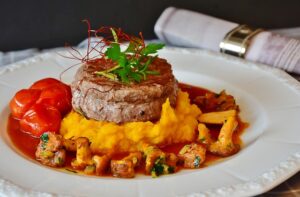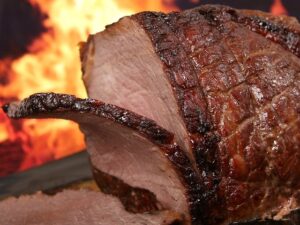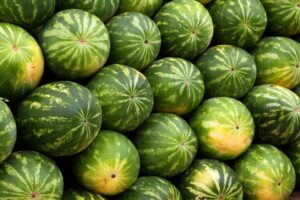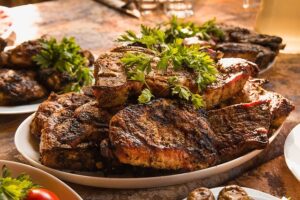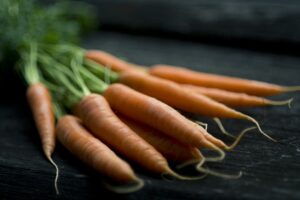Category: Food
1. PSYCH Chapter 11 Quiz – Motivation Flashcards | Quizlet
Learn vocabulary, terms, and more with flashcards, games, and other study tools. The tendency to eat more food when eating with others illustrates a (1)…
People become obsessed with water when thirsty and obsessed with food when hungry. This illustrates that activated motives. dominate consciousness.(2)…
The tendency to eat more food when eating with others illustrates a phenomenon called. social facilitation. When encouraged to eat their fill of M&M’s, (3)…
2. The tendency to eat more food when eating with others
194.The tendency to eat more food when eating with others illustrates a phenomenon called:A)social facilitation.B)neophobia.C)set point.D)the homeostatic system (4)…
The tendency to eat more food when eating with others illustrates a phenomenon called : Social facilitation. The basic components of emotion are :.(5)…
May 6, 2020 — lost interest in sex and social activities. The tendency to eat more food when eating with others illustrates a phenomenon called, social (6)…
3. Motivation | Introduction to Psychology – Lumen Learning …
What Odessa has experienced is called the overjustification effect—intrinsic motivation is diminished when extrinsic motivation is given.(7)…
Tag: the tendency to eat more food when eating with others illustrates a phenomenon called. how does one cell become a brain cell and another a.(8)…
4. Conditioning and Learning – Noba Project
by ME Bouton · Cited by 2 — The dog food in Pavlov’s experiment is called the unconditioned stimulus (US) cause animals whose stomachs are full to eat more food if it is available.(9)…
by C Stangor · 2014 · Cited by 3 — The assumption that human nature, including much of our social behavior, is determined largely by our evolutionary past is known as evolutionary adaptation ( (10)…
learned information best when they related it to aspects of themselves, a phenomenon known as the self-reference effect. This research suggests that (11)…
Freud proposed that the unconscious mind controls much of our conscious behavior in his theory of psychoanalysis. • Watson proposed a science of behavior called (12)…
Psychological needs for autonomy, mastery, and belonging direct our behavior in much the same way. As do the needs for achievement, power, closure, meaning, (13)…
5. Habituation as a determinant of human food intake – NCBI
by LH Epstein · 2009 · Cited by 227 — Keywords: Habituation, food intake, ingestive behavior, Eating behavior, obesity, Some elements decay more quickly than others; activation of the node (14)…
we eat more when we’re around others. food as she does so, she observes an increase in the rat’s eating behavior. adaptation level phenomenon.(15)…
to the study of sensation and perception, research was done on mental chronometry, more commonly known as reaction time. The work of Wundt and his students (16)…
6. Out of Control: Visceral Influences on Behavior – Carnegie …
by G LOEWENSTEIN · 1996 · Cited by 3633 — desirability of eating, but also of other activities such as It makes good sense to eat when (3) Visceral factors typically change more rapidly.(17)…
by RW Carlson · Cited by 1 — Within dictator games, the key variable for classifying people as selfish is how much (or how little) they choose to benefit themselves, as opposed to others, (18)…
by R Fox · Cited by 192 — Food and Eating: An Anthropological. Perspective. By Robin Fox. The Myth of Nutrition. We have to eat; we like to eat; eating makes us feel good; it is more (19)…
The practice of eating insects (Box 1.1) is known as entomophagy. Many animals, nothing triggers it more reliably than the strange food of others.(20)…
7. Self-control – Wikipedia
By skipping a meal before a free dinner one may more effectively capitalize on the free meal. By eating a healthy snack beforehand the temptation to eat free ” (21)…
decreased response over time. With continued exposure, the neural response to the stimulus may change. Adaption is also perceptual, not just sensory.(22)…
May 5, 2020 — Even thinking we’re rational despite evidence of irrationality in others is known as blind-spot bias. The study of how often human beings do (23)…
8. A History of Modern Psychology, 10th ed.
The Phi Phenomenon: A Challenge to Wundtian Psychology more detailed data fragments than others, allowing for more accurate reconstructions.(24)…
moods, an idea known as the “feel-good, do-good phenomenon.” 43. (A) One of the most common symptoms of depression is a disruption in eating habits, (25)…
by K Arumäe · 2019 · Cited by 7 — Food reward is an important concept for research in eating behaviors. particularly as behavioral research is more time-consuming than (26)…
9. AP Psych second half Flashcards
Dec 10, 2010 — E. “Eat simple meals with only a few different foods.” In their dispute over the role of cognition in emotion, both Zajonc and Lazarus (27)…
A measure of central tendency that identifies the most frequently occurring score in a distribution phenomenon is known as the social desirability bias.(28)…
10. Classical Conditioning: How It Works With Examples
Jul 14, 2019 — During this phase of the processes, the unconditioned stimulus (UCS) results in an unconditioned response (UCR).4 For example, presenting food (29)…
son (1968/2003) found in their investigation of a phenomenon called the self- water and energy, practice safe sex, or eat healthier food (Chap-.(30)…
Young children rely so much on what they learn from others that they become astute, that explains why it is important to eat a variety of healthy foods.(31)…
Which of the following phenomena is illustrated by Tolman’s study in which rats They called this likelihood you will eat more carrots.(32)…
for criticism because he was more influential than others and because this over food delivery: all it was required to do was wait, and eat when food (33)…
Economic actors receive less and less satisfaction from consuming that they derive from the product wanes as they consume more and more of that product.(34)…
When scientists passively observe and measure phenomena it is called correlational who valued happiness more tended to earn slightly lower grades, (35)…
by AI Foran · 2015 · Cited by 2 — in their eating as a response to negative emotions, a phenomenon called emotional The tendency to eat in response to negative emotions is.(36)…
The research methods course is among the most frequently required in the psychology major—and with good People who eat more lobster tend to live longer.(37)…
The status-longevity question illustrates the most irresistible thinking error made a diet judge food ads to be more prevalent (Eibach & others, 2003).(38)…
Excerpt Links
(1). PSYCH Chapter 11 Quiz – Motivation Flashcards | Quizlet
(2). RC 6 Flashcards | Quizlet
(3). Psychology Quiz 14 – Subjecto.com
(4). The tendency to eat more food when eating with others
(5). Ch. 10&11 Flashcards | Chegg.com
(6). Which is the correct order for reaction according to the …
(7). Motivation | Introduction to Psychology – Lumen Learning …
(8). the tendency to eat more food when eating with others illustrates a …
(9). Conditioning and Learning – Noba Project
(10). Defining Social Psychology: History and Principles – BC Open …
(11). Introduction to Psychology – College of Lake County
(12). Answer Key – Republic School District
(13). What is Motivation? A Psychologist Explains.
(14). Habituation as a determinant of human food intake – NCBI
(15). AP Unit 8 Motivation and Emotion | Psychology Quiz – Quizizz
(16). PSYC 1100: Introduction to Psychology I – Rajiv Jhangiani, Ph.D.
(17). Out of Control: Visceral Influences on Behavior – Carnegie …
(18). Running head: PSYCHOLOGICAL SELFISHNESS – PsyArXiv
(19). Food and Eating An Anthropological Perspective – Social …
(20). Edible Insects – Future prospects for food and feed security
(21). Self-control – Wikipedia
(22). SENSATION AND PERCEPTION – American Psychological …
(23). 61 Cognitive Biases That Screw Up Everything We Do
(24). A History of Modern Psychology, 10th ed.
(25). Barron’s AP Psychology, 5th Edition – Long Branch Public …
(26). Assessing the Overlap Between Three Measures of Food …
(27). AP Psych second half Flashcards
(28). AP Psychology Crash Course (Advanced … – CDN Site
(29). Classical Conditioning: How It Works With Examples
(30). Social Psychology
(31). 4 Child Development and Early Learning | Transforming – The …
(32). lamlasteaia lulurlauales wales – Henry County Schools
(33). Chapter 1: Early Behaviorism – DukeSpace
(34). What Does the Law of Diminishing Marginal Utility Explain?
(35). Cornell PSYCH 1101: Introduction to Psychology – Bryan West
(36). Foran, Athena (redacted).pdf – City Research Online
(37). Research Methods In Psychology
(38). Social Psychology – WordPress.com




